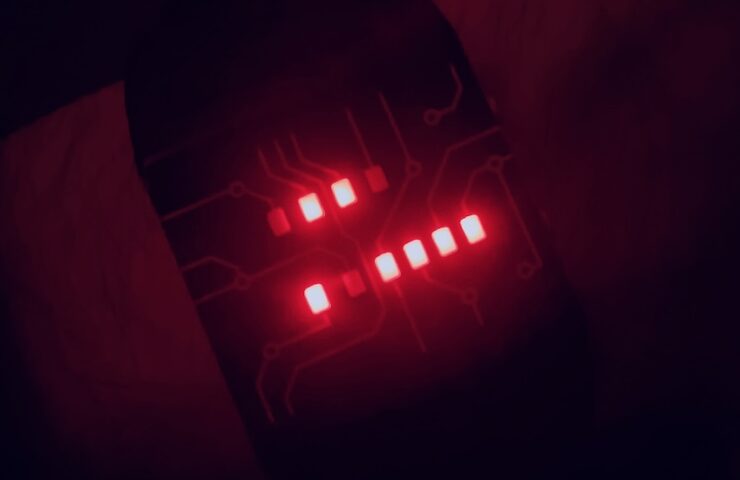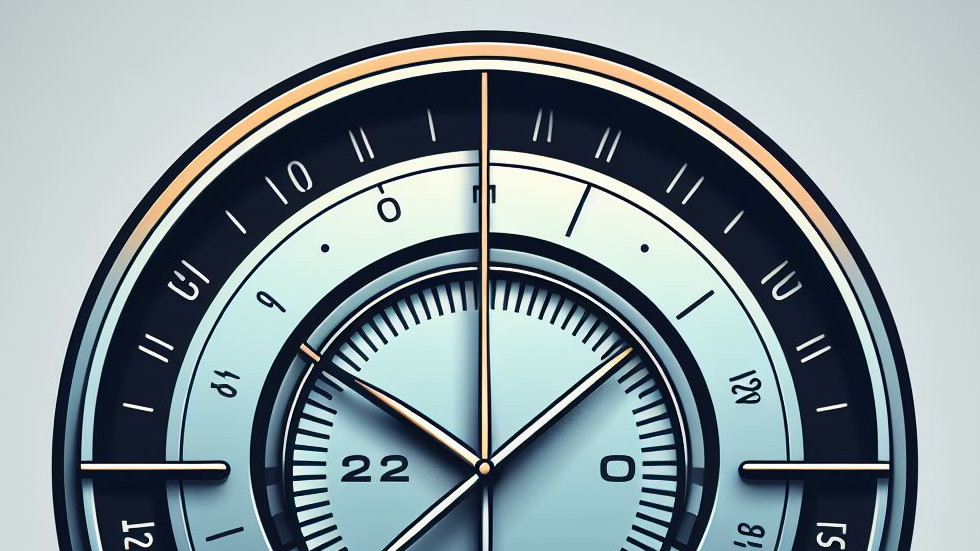I first learnt binary as a kid at school and on a few (admittedly rare) occasions it has been useful to know it for my day job (since I work in IT). However these days, it is primarily just something I use to read my binary wrist watch.
What I have found after wearing that watch on and off over a couple of years is that it rapidly got easier to read, at least for the range of numbers found on clocks (‘1-59’).
How to read a binary watch
On my watch, the top row shows the current hour. The LEDs here represent ‘8’, ‘4’, ‘2’ and ‘1’ (read from left to right). The bottom row displays the current minute and the LEDs represent ’32’, ’16’, ‘8’, ‘4’, ‘2’ and ‘1’. In short, you just need to add up all the lit LEDs, to find the decimal numbers representing the hour and minute.
Once you have the basics down, here are a handful of tricks and shortcuts that are useful for quickly reading a binary watch.
ℹ In this guide I will represent lit LEDs as 1 and unlit LEDs as 0. For the most part I will just list the right-most positions (assume the rest are unlit).
Numbers that end with 0 are even
Or put another way, numbers that end with 1 are odd.
1 = 1 10 = 2 11 = 3 100 = 4
Most people will see this immediately but it is worth keeping this in mind as it is handy as a quick check that there might be something wrong with your calculation, i.e. if the number you calculate is even but what you see ends with 1… you did it wrong! 😉
Doubling patterns
This is also obvious when you really think about it but something that I had not noticed until I started using the watch. The point here is that all patterns of smaller numbers double when moving one step to the left.
Consider a number like 11. That is fairly easy to read as ‘3’. Once you understand this any number containing that pattern is also pretty obvious.
110 = 6 1100 = 12 11000 = 24 110000 = 48
Similarly 101 is ‘5’ and so
1010 = 10 10100 = 20 101000 = 40
111 is ‘7’ and thus
1110 = 14 11100 = 28 111000 = 56
Since 1001 is ‘9’
10010 = 18 100100 = 36
ℹ If you recall the shortest version of a pattern, you can just double it as it moves left by each position.
Memorise frequently used patterns/numbers
In addition to quickly memorising many of the small patterns from use (and their multiples), you might want to remember commonly used times, e.g 1111 [15], 11110 [30] and 101101 [45] (for the half and quarters of the hour). That last one is also interesting looking, so easy to recall.
Always work out the minutes first
ℹ More often than not you know the hour already, additionally it is usually a smaller number.
Many LED based binary watches give you a few seconds (after a keypress) to calculate the time before all the LEDs dim. If you work out the minute first, that will often be enough. And with the more limited number of possible times for the hour, you may read it at a glance anyway (as you will soon have all those positions memorised).
One less
Numbers such ‘3’, ‘7’, ’15’, ’31’ are really easy to spot because they just solid blocks of ‘1s’.
11 = 3 111 = 7 1111 = 15 11111 = 31
Compare those to the next number in sequence to see what is going on.
100 = 4 011 = 3
1000 = 8 0111 = 7
10000 = 16 01111 = 15
100000 = 32 011111 = 31
The number immediately proceeding a major number like ‘2’, ‘4’, ‘8’, etc. will have a stack of 1s to the right.
Another way to think of that is that you just invert the numbers from the right-most 1 to decrease the number by ‘1’.
101100 = 44 101011 = 43
Calculate unknown numbers using ones you already know
Take a number like 110111. Initially one might work that out with lots of small additions.
1 1 0 1 1 1 32 + 16 + 0 + 4 + 2 + 1 = 55
Not hard but it takes a little time to do in your head. I would tend to look at this other ways. There are two overlapping patterns I instantly recognise here, 110000 is ’48’ and 000111 is ‘7’, so ’48+7′ = ’55’. Or perhaps, I would just count back from a higher number I recognise. I know 111000 is ’56’. 110111 is one less (if you invert the numbers from the right-most 1).
If you look at binary numbers frequently and already know 111000 (I mentioned it above), you can spot that last one in an instant.
Final thoughts
These are just a few of the tricks I have picked up to show how you can interpret binary in decimal terms more easily (without calculating every number). For the most part I can now read my binary watch pretty quickly. Often at a glance and in the worst case, usually within a couple of seconds. No that is not as fast as a normal digital or analog but quick enough to make it useable and useful. I also suspect that if I used it more (I rotate through a bunch of odd watches) I could reliably match the speed of (accurately) reading an analog clock. You do after all find yourself just memorising a bunch of positions (through regular use), so the amount of calculation you have to do, rapidly drops.
I will add however that there is one problem that occasionally catches me out with binary watches that use LEDs specifically. In pitch black it can sometimes be hard to pick out the positions of the off state LEDs. Thus a number like 11 can look similar to 110 (they both just look like two lit LEDs that are next to each other). And that my friends is how I once woke at 06:00 in the morning and started to make coffee and prepare for the day, only to later realise it was actually 03:00! 😆
[✍ 2023-11-06 @14:06 +0100]
Bonus trick for approximation
Here is another small trick that was quite handy when I first started using the watch (and was much slower at calculation).
You can sort of use a binary watch for glancing approximation (similar to how many use analog watches) if you only need to know roughly where you are in the hour, rather than the absolute minute. This is usually “good enough” for upcoming meetings or events, which tend to fall on the hour or half hour.
The minute line is 6 LEDs long but you only need look at the left-most two to do this. As an added bonus, if you have an event up coming you will often already know the current hour anyway. In that case you can ignore the hour line entirely and just focus on these first two LEDs on the minute line.
If neither are lit you are within the first quarter of the hour.
00[…] = '0-15' mins
If only the right one is lit you are over the first quarter but most likely not half way through the hour.
01[…] = '16-31' mins
If only the left one is lit you are over half way through the hour but probably not into the last quarter (or only just!).
10[…] = '32-47' mins
If both are lit you are over the final quarter and most likely within the last 10 minutes of the hour.
11[…] = '48-59' mins
[✍ 2023-11-07 @09:04 +0100]
ℹ In the real world you will not see these two LEDs in isolation. You will still have a vague awareness of the others, even if you do not attempt to properly calculate them. More lights (particularly those close to the two right-most LEDs) will give you a rough feeling for how close you are to the crossover times.


